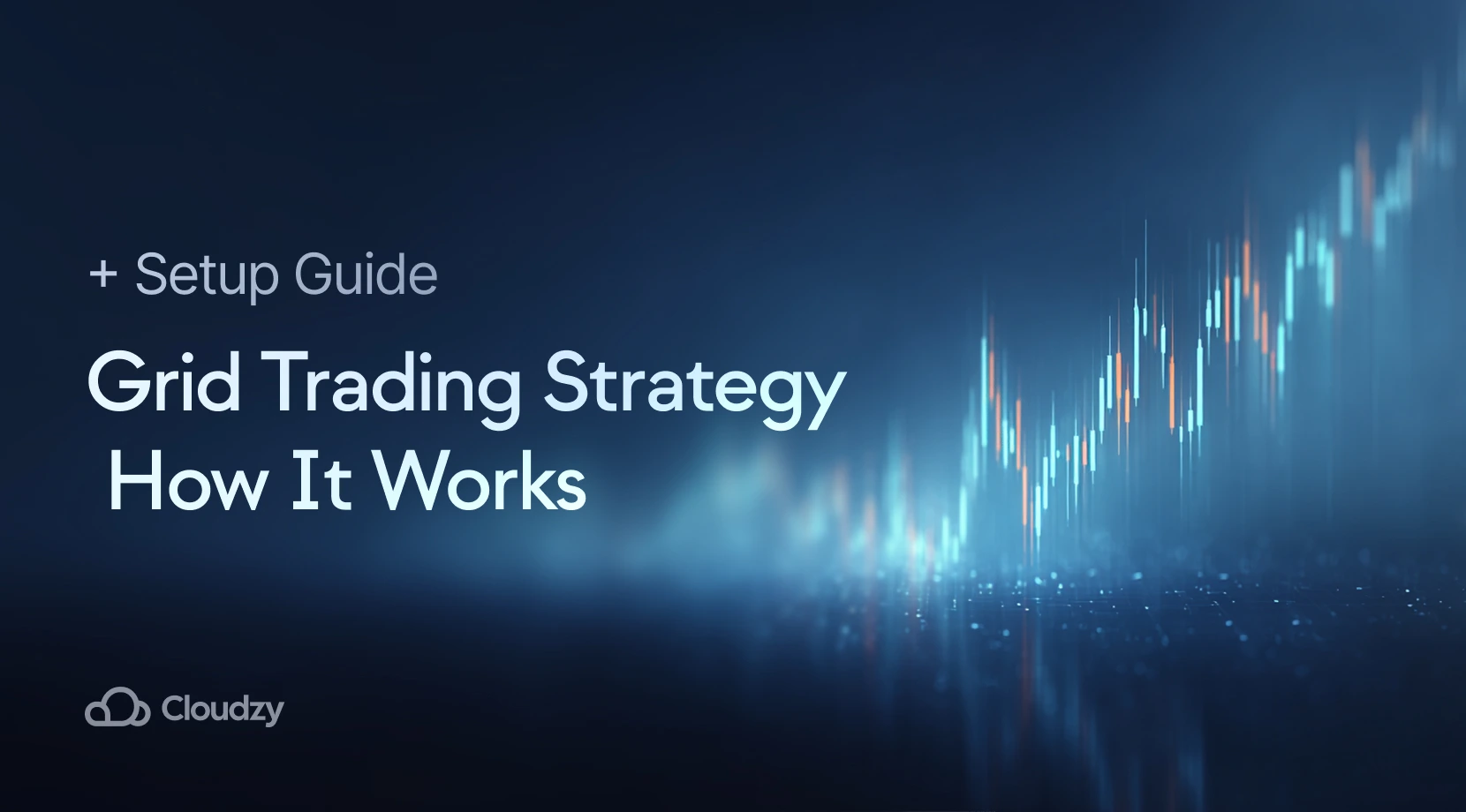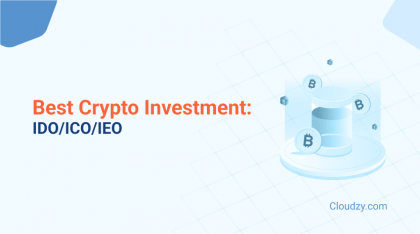When you think of the crypto world, you typically think of crypto trading and NFTs, but these aren’t the only ways to make a pretty penny from crypto. Why trade cryptocurrencies when you can mine them and generate coins for yourself?
This is called crypto mining, and it requires a significantly high level of hardware and maintenance. That’s why many opt for cloud crypto mining. Cloud mining, or virtual mining, removes the need for the expenses and hassle of physical hardware by using powerful data centers to run the mining equipment.
That said, it’s not as easy as merely renting a robust cloud computing service to do all the cloud mining for you. There is plenty to consider, including factors like choosing the right cloud mining service, the right amount of hash power (computational power), managing maintenance fees, etc.
Even if you do all these right, if you choose the wrong cryptocurrency, your expenses may end up being significantly higher than the amount you make from cloud mining.
Furthermore, even if you do your homework and choose the cryptocurrency with the most probable profit, the high volatility of the crypto market may cause your cryptocurrency to lose so much of its value that you ultimately pay more for the cloud mining service than the profit of generating and selling the coins you mined.
That’s why it’s important to be aware of all the various aspects of cloud mining before paying a hefty sum for the service. But before we get into the benefits and drawbacks of crypto cloud mining, let’s discuss what cloud mining is and what currencies are popular for mining.
What Is Cloud Mining?
Rather than dealing with the expenses and complexity of traditional crypto mining, the concept of cloud mining was introduced in 2013, allowing users to mine any cryptocurrency without having to set up and buy the mining rigs themselves.
Before cloud crypto mining, Bitcoin was so easy to mine that anyone with a computer could do it without spending a whole lot. Basically, to mine Bitcoin, miners need to solve cryptographic mathematical puzzles that, when solved, will add a block to the blockchain, increasing its security and growth as a ledger.
However, as time passed and more people started to solve the puzzles required to mine Bitcoin, the rate at which blocks were added to Bitcoin started to increase too much. So, Bitcoin gradually became harder to mine as the network needed a steady number of blocks added to the blockchain (e.g., a new block every 10 minutes) and nothing more.
As Bitcoin puzzles became more difficult, people started using more powerful hardware to solve them faster. This mutual, two-way increase in puzzle difficulty and computing power made it so that normal computers weren’t powerful enough to mine Bitcoin, leading to the creation of mining rigs called ASICs.
Since the number of people who could afford them decreased over time, cloud mining stepped in as a solution to mainstream mining cryptocurrencies.
Crypto cloud mining allows people to pay a fee to cloud mining providers to rent computing power from data centers and mining farms, and in return, they get a portion of the mining rewards generated by the rented computing power.
So, now that you have a general understanding of cloud crypto mining let’s talk about how cloud mining is done.
How Is Cloud Mining Done?
While cloud mining is a much simpler way to mine cryptocurrencies, it still has its own intricacies and requires a good deal of consideration and knowledge to make a tangible profit from cloud mining.
1. Choose a Cloud Mining Platform
One of the most important factors to consider when looking to get into cloud mining is choosing the right cloud mining platform that offers a plan that suits your needs and budget.
You’ll need to make sure that the mining provider you choose is reputable, which you can do by reading reviews on independent cryptocurrency forums (such as BitcoinTalk), checking social media feedback, and looking for articles about the company’s track record.
This will help you evaluate whether a cloud mining platform is genuine and dependable so that you can avoid a common issue with providers: fraudulent cloud crypto mining providers and scammers who will take your money and either disappear with it or not give you any of the mining rewards you are owed.
One key factor that often goes under the radar is the provider’s jurisdiction. Cloud mining providers based in crypto-friendly regions may offer more reliable services, as they’re less likely to face sudden shutdowns due to regulatory shifts.
Beyond obvious scams, some providers promise huge returns but beware of ‘too good to be true’ offers. Reliable cloud crypto mining companies generally don’t guarantee high profits, as crypto mining’s success depends heavily on market conditions. Look for providers who clearly outline potential returns without making unrealistic promises.
Next, you’ll want to ensure that the cloud mining provider has implemented several layers of robust security measures such as two-factor authentication (2FA), secure wallet options, SSL encryption, and secure payment methods, as cryptocurrency is a major target for hackers.
2. Choosing a Mining Plan
Once you’ve decided on a cloud mining provider, you’ll need to choose a mining plan that aligns with your budget, risk tolerance, and mining goals. Typically, cloud mining providers offer various plans based on the amount of hash power rented.
Hash power is the computational power required to solve the puzzles required for mining a cryptocurrency that you’re renting from the provider. Hash power is measured in hash rate; for example, for Bitcoin, the unit is TeraHashes per Second (TH/s). The more hash power you rent, the more mining rewards you can potentially earn and, in turn, the more it’ll cost you to rent.
Typically, cloud mining providers offer two types of contracts, short-term and long-term. Short-term contracts usually last from a few months to a year. These are more flexible but may come with higher costs.
As for long-term contracts, these typically last multiple years and offer lower overall fees, but users are locked in for a longer period. Long-term contracts can be more profitable if the cryptocurrency market is favorable.
Short-term contracts are often best suited for users who want to experiment with cloud mining or quickly take advantage of favorable market conditions without long commitments.
For seasoned miners, longer contracts may be more appealing if they’re confident in market trends and prefer stable maintenance costs over time. Some platforms also offer seasonal contracts, designed to optimize returns during less competitive mining periods.
Duration aside, you’ll need to decide on the specific payout structure, account for maintenance fees, and choose the specific cryptocurrency being mined. In terms of payout structure, some providers offer daily payouts, while others may pay out weekly or monthly.
As for maintenance fees, you’ll need to be aware of exactly how these fees are calculated, as some cloud mining providers may bundle these fees into the contract price or may charge these fees separately and deduct them from your earnings before they are paid out.
Maintenance fees can add up fast, especially if they’re tied to the cryptocurrency’s mining difficulty or energy usage. Some miners use online calculators, like NiceHash’s profitability calculator, to estimate potential earnings after fees.
Lastly, you’ll need to decide on the cryptocurrency that’ll be mined by estimating potential profits using tools like WhatToMine, which take into account factors like mining difficulty, cryptocurrency prices, and hash power.
3. Receiving Payout
The rewards are proportional to the hash power share, meaning if you rent 1% of the total hash power, you’ll earn 1% of the mining rewards minus maintenance fees. Rewards are usually paid in the cryptocurrency being mined, such as Bitcoin, but some providers allow conversions into other cryptocurrencies or fiat currencies like USD.
These rewards are transferred directly to your cryptocurrency wallet, which must be securely set up beforehand. Most cloud mining platforms handle payouts automatically based on the schedule in your contract.
Some platforms also offer reinvestment options, allowing you to use your earnings to buy more hash power, potentially increasing future returns, though this comes with additional risks if market conditions change.
Final Thoughts: Is Cloud Crypto Mining Profitable?
The profitability of crypto cloud mining is becoming tougher to maintain. As I mentioned earlier, one of the most popular types—Bitcoin cloud mining—has gotten harder and continues to face challenges.
Bitcoin rewards are halved roughly every four years through a process called “Bitcoin halving,” which reduces the amount of Bitcoin that can be mined. This halving, combined with the rising difficulty of mining, means that over time, it’s becoming more challenging to stay profitable in Bitcoin cloud mining.
Plus, virtual mining of other currencies like Ethereum is no longer possible due to Ethereum’s transition to proof-of-stake(PoS). Speaking of PoS, As profitability becomes more challenging, some miners are shifting to alternative coins or proof-of-stake (PoS) options to stay ahead of rising mining costs.
For instance, smaller cryptocurrencies like Litecoin and Dogecoin are seeing increased cloud mining interest due to their lower competition compared to Bitcoin.
Look, crypto mining can be massively profitable; however, as with anything crypto, it needs to be done right, and you need to know a good deal about the crypto market, mining difficulty, and pricing dynamics.
FAQ
What are the best cloud crypto mining platforms?
Currently, Bitcoin remains the top choice for cloud mining due to its high demand and potential profitability. Other popular options include Litecoin, which has lower fees, and Ethereum Classic, which is preferred after Ethereum’s shift to proof-of-stake. Dogecoin is also gaining traction for its lower competition.
What are the best coins for cloud mining?
For reliable cloud mining, Genesis Mining, Hashflare, and NiceHash are top picks due to their established reputation, transparency, and diverse contract options. BitDeer also stands out with flexible plans and a user-friendly setup, making it great for both beginners and seasoned miners.
Is cloud mining profitable?
The profitability of cloud mining has become increasingly difficult, particularly for Bitcoin. The rewards for mining Bitcoin are halved roughly every four years through a process called “Bitcoin halving,” reducing the amount of Bitcoin that can be mined, making it harder to make any real profit.


